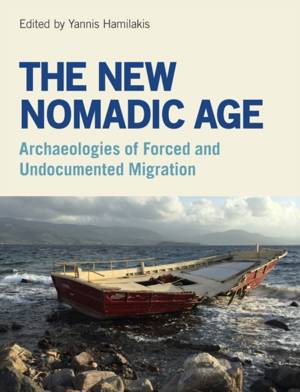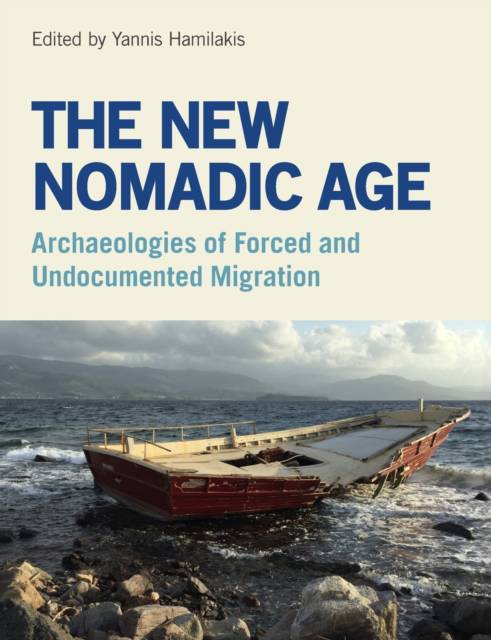
Je cadeautjes zeker op tijd in huis hebben voor de feestdagen? Kom langs in onze winkels en vind het perfecte geschenk!
- Afhalen na 1 uur in een winkel met voorraad
- Gratis thuislevering in België vanaf € 30
- Ruim aanbod met 7 miljoen producten
Je cadeautjes zeker op tijd in huis hebben voor de feestdagen? Kom langs in onze winkels en vind het perfecte geschenk!
- Afhalen na 1 uur in een winkel met voorraad
- Gratis thuislevering in België vanaf € 30
- Ruim aanbod met 7 miljoen producten
Zoeken
The New Nomadic Age
Archaeologies of Forced and Undocumented Migration
Yannis Hamilakis
Paperback | Engels
€ 80,95
+ 161 punten
Omschrijving
It can be suggested that today we live in a new nomadic age, an age of global movement and migration. For the majority of people on earth, however, especially from the global south, crossing national borders and moving from the global south to the global north is risky, perilous, often lethal. Many are forced or compelled to migrate due to war, persecution, or the structural violence of poverty and deprivation. The phenomenon of forced and undocumented migration is one of the defining features of our era. And while the topic is at the centre of attention and study in many scholarly fields, the materiality of the phenomenon and its sensorial and mnemonic dimensions are barely understood and analysed. In this regard, contemporary archaeology can make an immense contribution. This book, the first archaeological anthology on the topic, takes up the challenge and explores the diverse intellectual, methodological, ethical, and political frameworks for an archaeology of forced and undocumented migration in the present. Matters of historical depth, theory, method, ethics and politics as well as heritage value and public representation are investigated and analysed, adopting a variety of perspectives. The book contains both short reflections and more substantive treatments and case studies from around the world, from the Mexico-USA border to Australia, and utilizes a diversity of narrative formats, including several photographic essays.
Specificaties
Betrokkenen
- Auteur(s):
- Uitgeverij:
Inhoud
- Aantal bladzijden:
- 256
- Taal:
- Engels
Eigenschappen
- Productcode (EAN):
- 9781781797112
- Verschijningsdatum:
- 3/09/2018
- Uitvoering:
- Paperback
- Formaat:
- Trade paperback (VS)
- Afmetingen:
- 185 mm x 244 mm
- Gewicht:
- 680 g

Alleen bij Standaard Boekhandel
+ 161 punten op je klantenkaart van Standaard Boekhandel
Beoordelingen
We publiceren alleen reviews die voldoen aan de voorwaarden voor reviews. Bekijk onze voorwaarden voor reviews.









